The Inspiring Story of Ray Dalio
Famous American investor and founder of the largest hedge fund in the world, Ray Dalio’s life story is an inspiring example of perseverance, foresight, and timeless wisdom.
As an investment guru, he has inspired millions with his dynamic ideas and principles.
According to Forbes, Ray Dalio has an estimated net worth of $20 billion as of January 2022, ranking him 88th on their billionaire list.
While Bloomberg News reported Dalio’s net worth as $15.7 billion, making him the world’s 123rd-richest person this year.
Ray Dalio is regarded as one of the greatest innovators in the finance world, having popularized many commonly used practices, such as risk parity, currency overlay, portable alpha, and global inflation-indexed bond management.
So, let’s learn about the life story of this investing genius.
Early Life
Raymond Dalio was born on 8th August 1949 in New York.
His father was a jazz musician and his mother a homemaker.
As a child, Ray enjoyed sports and playing with his friends although he didn’t like the school routine much, especially the rote memorization.
In his free time, he did odd jobs, including mowing lawns, shoveling snow, and a paper route.
From age 12, he worked as a caddy at the Links Golf Club, an exclusive golf course where his customers included the Duke of Windsor and soon-to-be president Richard Nixon, along with many noted Wall Street investors.
With $300 he had saved from his caddy earnings, Dalio bought shares of Northeast Airlines.
At five dollars a share, it was the only major company whose stock he could afford.
As it happened, Northeast became the object of a merger effort, and the 12-year-old boy quickly tripled his investment.
Ray was hooked!
He started reading annual reports of major companies, spoke to senior investors, and indulged in trial and error investing.
In the process, he learned principles that he continued to apply in his long investing career.
By the time he graduated from high school, he had assembled a stock portfolio worth several thousand dollars, a significant amount for a teenager.
College Life and early career
With his unimpressive academic performance in high school, Ray Dalio wasn’t able to find a decent college.
He eventually enrolled at C. W. Post College, a campus of the Long Island University.
He continued to buy and sell stocks in college and at the same time, also got interested in commodity futures.
The low margin requirements attracted him to this sector, where he saw an opportunity to earn a considerable profit on a minimal investment.
Ray enjoyed his time at college and after graduating with a BS degree in finance, he took up a job as a clerk at the New York Stock Exchange.
While there, he witnessed Nixon’s decision to take the United States off the gold standard leading to events that caused the Great Inflation of the 1970s.
His experience in trading commodities later became much more valuable as they are typically more resilient and thrive during times of inflation.
Soon he got accepted at the Harvard Business School.
The summer between Ray’s two years at Harvard was spent trading commodities at Merrill Lynch.
When he returned to his grad school, he and some of his Harvard friends set up a small company called Bridgewater Associates to trade in commodities.
Since they lacked experience, their venture yielded less profits.
But Dalio retained the name Bridgewater for his future goals.
When Ray Dalio finished his Harvard MBA and arrived on Wall Street in 1973, his expertise in commodities trading made heads turn and investors began to look at him for inspiration.
Starting Bridgewater
Dalio joined a leading wall street firm Shearson Hayden Stone as a trader but he resented the rigid practices that were followed there.
Soon Dalio got into a conflict with his department head.
But despite this altercation, a number of his trading clients retained their faith in him, and he left Shearson to trade independently for his remaining clients.
A little later at the age of 26, he relaunched Bridgewater Associates from his own two-bedroom apartment.
Initially, only a few clients came looking for advice on currency exchange and interest rate risks but later as his popularity grew, more and more investors including McDonald’s began to seek his counsel.
Almost losing it all
Between 1979 and 1981 the economy was not looking good and markets at that time were quite volatile.
In March 1981, Dalio wrote a controversial observation predicting a bad depression and he was very confident about this.
He even asked his associates to scrutinize his observations and calculations to find if there were any flaws, but they couldn’t find anything different.
Dalio even declared publicly that he was predicting a depression.
But the prediction went wrong and the stock market began a big bull run and over the next 18 years, the US economy enjoyed the greatest non-inflationary growth period in its history.
This incident had a great impact on him, as he almost lost everything and had to dismiss all his employees as he couldn’t afford them.
He even had to borrow money from his dad. Still, he didn’t give up the idea of continuing his business and started introspecting and questioning himself.
He realized that he had developed a fear of being wrong, so he thought about changing his ways.
He gradually gained new clients, grew his business, and managed to build his company back to its level of success.
Building it back
While trying to build his business back, Ray Dalio divided his holdings into two different areas: Beta investments and Alpha investments.
Beta investments produce returns through passive management and normal market risk.
Alpha investments, on the other hand, are actively managed and aim to generate better returns than beta investments.
Dalio’s goal was to structure portfolios with uncorrelated investment returns based on risk allocations rather than asset allocations.
As Bridgewater’s client list grew, so did the scope of its investments. Dalio used an investment approach called “global macro,” investing on a large scale around the world on the basis of broad systemic factors.
He carefully built Bridgewater by anticipating changes in currency exchange rates, commodity prices, inflation, and GDP growth in the world’s economies.
In 1985, Bridgewater signed the World Bank’s employee retirement fund as one of its clients. Kodak’s retirement system followed soon after.
His firm Bridgewater Associates has today become the world’s largest hedge fund managing $160 billion on behalf of 350 of the largest and most sophisticated global institutions, including pension funds, university endowments, public and private foundations, central banks, and foreign governments.
It’s also the fifth most important private company in the US according to Fortune Magazine.
While Pure Alpha has become Bridgewater’s flagship fund, earning an average annual yield of 18 percent.
Transcendental Meditation
Right from his college days, Dalio was inspired by the practice of Transcendental Meditation that he follows till date.
He has often held the practice responsible for the success in his life.
He says the practice allows him to feel calm and think more clearly and creatively when making decisions. Transcendental Meditation helped Dalio temper his aggression as well.
And it changed his attitude from thinking he was always right to instead asking himself, “How do I know I’m right?”
Dalio’s Principles
Dalio has also written an amazing book called “Principles”, which is a compilation of Dalio’s life and work principles, philosophies, lessons, and reflections, aggregated over his 40+ year career.
He saw that the only way to succeed would be to practice radical truth and transparency, idea meritocracy and continuous and systemized improvement,
Going Strong
Over the years, Dalio has been a valued macroeconomic advisor to many policymakers around the world and was even named by TIME magazine as one of the “100 Most Influential People in the World.”
Dalio is considered a finance legend who’s also been called “the Steve Jobs of investing” because of his tough but innovative management style.
Dalio has been married to his wife, Barbara, for more than 40 years and has three grown sons along with five grandchildren.
He is an active philanthropist with special interests in ocean exploration and also helps to rectify the absence of equal opportunity in education, healthcare, and finance.
He has donated about $1 billion to such philanthropic causes through his Dalio Foundation.
Dalio often describes himself as a curious, independent thinker who was always enthusiastic and excited about visualizing his goals.
He strived to achieve ambitious things and learn from his failures.
Dalio famously said “In trading, you have to be defensive and aggressive at the same time. If you are not aggressive, you are not going to make money and if you are not defensive, you are not going to keep the money.”
Thank you for watching VRD Nation
Howdy!
If you’re here for the first time, let’s get introduced.
VRD Nation is India’s premier stock market training institute and we (Team VRD Nation) are passionate about teaching each and every aspect of investing and trading.
If you’re here for the first time, don’t forget to check out “Free Training” section where we have tons of free videos and articles to kick start your stock market journey.
Also, we got two awesome YouTube channels where you can continue the learning process.
Must-Read Articles
The Inspiring Story of Ray Dalio
Famous American investor and founder of the largest hedge fund in the world, Ray Dalio’s life story is an inspiring example of perseverance, foresight, and timeless wisdom.
As an investment guru, he has inspired millions with his dynamic ideas and principles.
According to Forbes, Ray Dalio has an estimated net worth of $20 billion as of January 2022, ranking him 88th on their billionaire list.
While Bloomberg News reported Dalio’s net worth as $15.7 billion, making him the world’s 123rd-richest person this year.
Ray Dalio is regarded as one of the greatest innovators in the finance world, having popularized many commonly used practices, such as risk parity, currency overlay, portable alpha, and global inflation-indexed bond management.
So, let’s learn about the life story of this investing genius.
Early Life
Raymond Dalio was born on 8th August 1949 in New York.
His father was a jazz musician and his mother a homemaker.
As a child, Ray enjoyed sports and playing with his friends although he didn’t like the school routine much, especially the rote memorization.
In his free time, he did odd jobs, including mowing lawns, shoveling snow, and a paper route.
From age 12, he worked as a caddy at the Links Golf Club, an exclusive golf course where his customers included the Duke of Windsor and soon-to-be president Richard Nixon, along with many noted Wall Street investors.
With $300 he had saved from his caddy earnings, Dalio bought shares of Northeast Airlines.
At five dollars a share, it was the only major company whose stock he could afford.
As it happened, Northeast became the object of a merger effort, and the 12-year-old boy quickly tripled his investment.
Ray was hooked!
He started reading annual reports of major companies, spoke to senior investors, and indulged in trial and error investing.
In the process, he learned principles that he continued to apply in his long investing career.
By the time he graduated from high school, he had assembled a stock portfolio worth several thousand dollars, a significant amount for a teenager.
College Life and early career
With his unimpressive academic performance in high school, Ray Dalio wasn’t able to find a decent college.
He eventually enrolled at C. W. Post College, a campus of the Long Island University.
He continued to buy and sell stocks in college and at the same time, also got interested in commodity futures.
The low margin requirements attracted him to this sector, where he saw an opportunity to earn a considerable profit on a minimal investment.
Ray enjoyed his time at college and after graduating with a BS degree in finance, he took up a job as a clerk at the New York Stock Exchange.
While there, he witnessed Nixon’s decision to take the United States off the gold standard leading to events that caused the Great Inflation of the 1970s.
His experience in trading commodities later became much more valuable as they are typically more resilient and thrive during times of inflation.
Soon he got accepted at the Harvard Business School.
The summer between Ray’s two years at Harvard was spent trading commodities at Merrill Lynch.
When he returned to his grad school, he and some of his Harvard friends set up a small company called Bridgewater Associates to trade in commodities.
Since they lacked experience, their venture yielded less profits.
But Dalio retained the name Bridgewater for his future goals.
When Ray Dalio finished his Harvard MBA and arrived on Wall Street in 1973, his expertise in commodities trading made heads turn and investors began to look at him for inspiration.
Starting Bridgewater
Dalio joined a leading wall street firm Shearson Hayden Stone as a trader but he resented the rigid practices that were followed there.
Soon Dalio got into a conflict with his department head.
But despite this altercation, a number of his trading clients retained their faith in him, and he left Shearson to trade independently for his remaining clients.
A little later at the age of 26, he relaunched Bridgewater Associates from his own two-bedroom apartment.
Initially, only a few clients came looking for advice on currency exchange and interest rate risks but later as his popularity grew, more and more investors including McDonald’s began to seek his counsel.
Almost losing it all
Between 1979 and 1981 the economy was not looking good and markets at that time were quite volatile.
In March 1981, Dalio wrote a controversial observation predicting a bad depression and he was very confident about this.
He even asked his associates to scrutinize his observations and calculations to find if there were any flaws, but they couldn’t find anything different.
Dalio even declared publicly that he was predicting a depression.
But the prediction went wrong and the stock market began a big bull run and over the next 18 years, the US economy enjoyed the greatest non-inflationary growth period in its history.
This incident had a great impact on him, as he almost lost everything and had to dismiss all his employees as he couldn’t afford them.
He even had to borrow money from his dad. Still, he didn’t give up the idea of continuing his business and started introspecting and questioning himself.
He realized that he had developed a fear of being wrong, so he thought about changing his ways.
He gradually gained new clients, grew his business, and managed to build his company back to its level of success.
Building it back
While trying to build his business back, Ray Dalio divided his holdings into two different areas: Beta investments and Alpha investments.
Beta investments produce returns through passive management and normal market risk.
Alpha investments, on the other hand, are actively managed and aim to generate better returns than beta investments.
Dalio’s goal was to structure portfolios with uncorrelated investment returns based on risk allocations rather than asset allocations.
As Bridgewater’s client list grew, so did the scope of its investments. Dalio used an investment approach called “global macro,” investing on a large scale around the world on the basis of broad systemic factors.
He carefully built Bridgewater by anticipating changes in currency exchange rates, commodity prices, inflation, and GDP growth in the world’s economies.
In 1985, Bridgewater signed the World Bank’s employee retirement fund as one of its clients. Kodak’s retirement system followed soon after.
His firm Bridgewater Associates has today become the world’s largest hedge fund managing $160 billion on behalf of 350 of the largest and most sophisticated global institutions, including pension funds, university endowments, public and private foundations, central banks, and foreign governments.
It’s also the fifth most important private company in the US according to Fortune Magazine.
While Pure Alpha has become Bridgewater’s flagship fund, earning an average annual yield of 18 percent.
Transcendental Meditation
Right from his college days, Dalio was inspired by the practice of Transcendental Meditation that he follows till date.
He has often held the practice responsible for the success in his life.
He says the practice allows him to feel calm and think more clearly and creatively when making decisions. Transcendental Meditation helped Dalio temper his aggression as well.
And it changed his attitude from thinking he was always right to instead asking himself, “How do I know I’m right?”
Dalio’s Principles
Dalio has also written an amazing book called “Principles”, which is a compilation of Dalio’s life and work principles, philosophies, lessons, and reflections, aggregated over his 40+ year career.
He saw that the only way to succeed would be to practice radical truth and transparency, idea meritocracy and continuous and systemized improvement,
Going Strong
Over the years, Dalio has been a valued macroeconomic advisor to many policymakers around the world and was even named by TIME magazine as one of the “100 Most Influential People in the World.”
Dalio is considered a finance legend who’s also been called “the Steve Jobs of investing” because of his tough but innovative management style.
Dalio has been married to his wife, Barbara, for more than 40 years and has three grown sons along with five grandchildren.
He is an active philanthropist with special interests in ocean exploration and also helps to rectify the absence of equal opportunity in education, healthcare, and finance.
He has donated about $1 billion to such philanthropic causes through his Dalio Foundation.
Dalio often describes himself as a curious, independent thinker who was always enthusiastic and excited about visualizing his goals.
He strived to achieve ambitious things and learn from his failures.
Dalio famously said “In trading, you have to be defensive and aggressive at the same time. If you are not aggressive, you are not going to make money and if you are not defensive, you are not going to keep the money.”
Thank you for watching VRD Nation

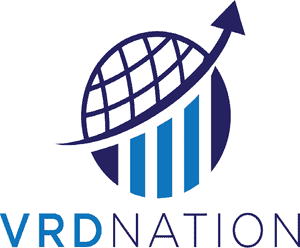


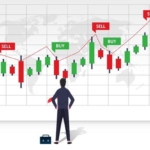


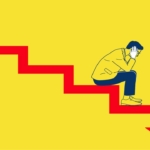


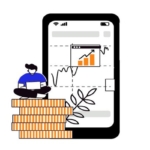




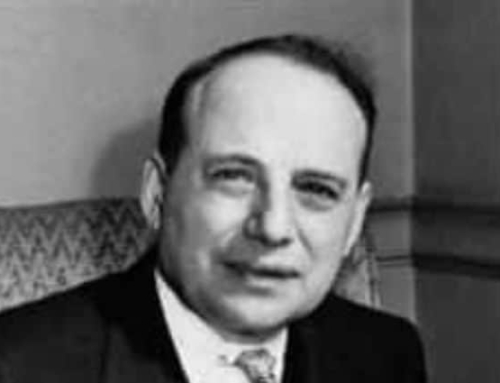

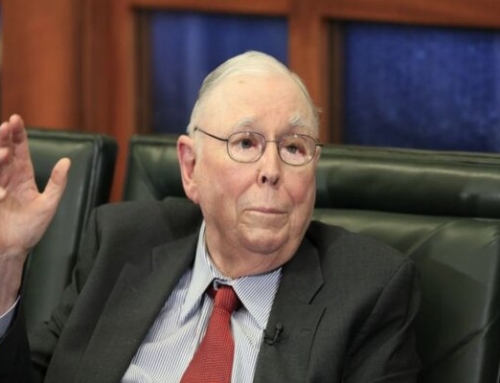

Leave A Comment